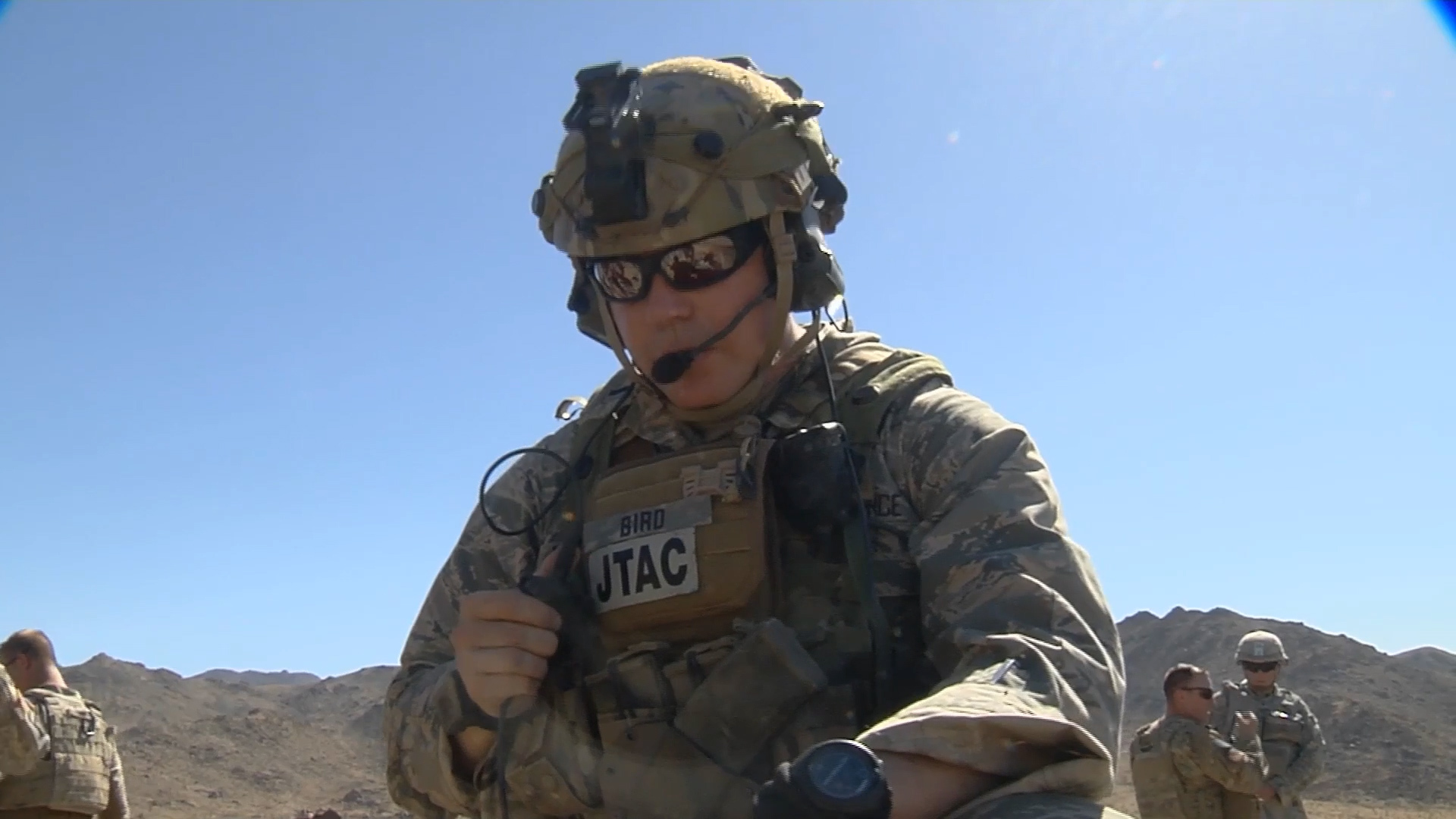
[Ryan Robertson]
COMMUNICATION. ASK THE LEADERS OF ANY SUCCESSFUL OPERATION AND THEY’LL TELL YOU COMMUNICATION IS THE KEY TO MAKING EVERYTHING WORK.
IT’S ALSO WHY COMMUNICATION INFRASTRUCTURE IS ALWAYS ONE OF THE FIRST TARGETS IN A CONFLICT. IF THE ENEMY CAN AFFECT YOUR ABILITY TO COMMUNICATE, THEY CAN AFFECT YOUR ABILITY TO FIGHT. SHOOTERS AND SPOTTERS GOTTA TALK.
THAT’S WHY HAVING A ROBUST COMMUNICATIONS SYSTEM MATTERS.
TO THAT END, EARLY THIS YEAR, THE AIR FORCE’S AIR MOBILITY COMMAND INKED A DEAL WITH PERSISTENT SYSTEMS TO MAKE SURE THEIR AIRMEN CAN STAY IN CONSTANT COMMUNICATION, NO MATTER WHERE THEY ARE, NO MATTER THE SITUATION.
FROM SATELLITES TO CELL TOWERS, IT’S EASY TO FALL INTO THE TRAP OF ASSUMING COMMUNICATION IS A GIVEN.
BUT WHAT HAPPENS IF THOSE SATELLITES ARE TAKEN OUT? OR THERE ARE NO CELL TOWERS? ONE ANSWER IS AN AD-HOC RADIO NETWORK.
AD HOC NETWORKS, OR MOBILE AD HOC NETWORKS, ARE DECENTRALIZED TYPES OF WIRELESS NETWORKS THAT DON’T RELY ON PRE-EXISTING INFRASTRUCTURE; INSTEAD, EACH NODE PARTICIPATES IN ROUTING BY FORWARDING DATA TO OTHER NODES. THEY CALL IT CLOUD NETWORKING.
[Adrien Robenhymer, VP, Business Capture, Persistent Systems]
“We’re connecting space, terrestrial and all sorts of other data links that are common throughout the air force or the full DOD, we’re able to utilize those in ways that they were just built for single purpose, like the walkie talkies. So now we can talk to jets that have radios that were made 30 years ago as if they were right next to us and they’re on the other side of the country. We can update their target packages within seconds, as opposed to waiting for minutes or even hours as they come into other communication architectures.
[Ryan Robertson]
ADRIEN ROBENHYMER (Robe-en-High-mer), PERSISTENT SYSTEM’S V-P OF BUSINESS CAPTURE. SAYS CREATING THAT KIND OF MOBILE NETWORKING ENVIRONMENT IS ONE REASON WHY AIR MOBILITY COMMAND INKED A DEAL WORTH MORE THAN $5 MILLION FOR MORE THAN 280 OF THEIR M-PU-5 (M-pew-5) HANDHELD RADIOS AND 10 INTEGRATED SECTOR ANTENNAS.
[Adrien Robenhymer, VP, Business Capture, Persistent Systems]
“The critical technologies that we’re providing are specific. It’s not something that is just, I would say, open. And there’s a lot of innovation that goes into it, you know, from the standpoint of what our company provides as a non traditional contractor. So we’re providing technology ahead of what the requirements are asking for, because that’s what it’s going to take.”
[Ryan Robertson]
ANOTHER REASON THE AIR FORCE WAS WILLING TO MAKE A MULTI-MILLION DOLLAR DEAL–THE SERVICE SAW SAW PERSISTENT SYSTEM’S WORK FIRSTHAND DURING THE VALIANT SHIELD 2024 EXERCISE IN THE INDO-PACIFIC. OVER 11 DAYS, THEIR WAVE RELAY AND CLOUD RELAY NETWORKING ENABLED U.S. COMMANDERS OPERATING FROM FORWARD-DEPLOYED AND FIXED OPERATIONS CENTERS– ALL OVER THE PACIFIC –TO TEST THE AIR FORCE’S AGILE COMBAT EMPLOYMENT CONCEPT THROUGH THE MANET-CLOUD HIGH MOBILITY RADIO. TRANSLATION–WARFIGHTERS COULD TALK TO OTHER WARFIGHTERS NO MATTER WHERE OR WHO THEY WERE.
[Adrien Robenhymer, VP, Business Capture, Persistent Systems]
“Everything in the kill chain is reduced to seconds instead of minutes, and that gives them better situational awareness, better lethality and better accuracy when working with partner nations.”
[Ryan Robertson]
PERSISTENT SYSTEMS PLANS TO DELIVER THE FULL COMPLEMENT OF MPU5 RADIOS AND INTEGRATED SECTOR ANTENNAS TO THE AIR FORCE IN JANUARY.











